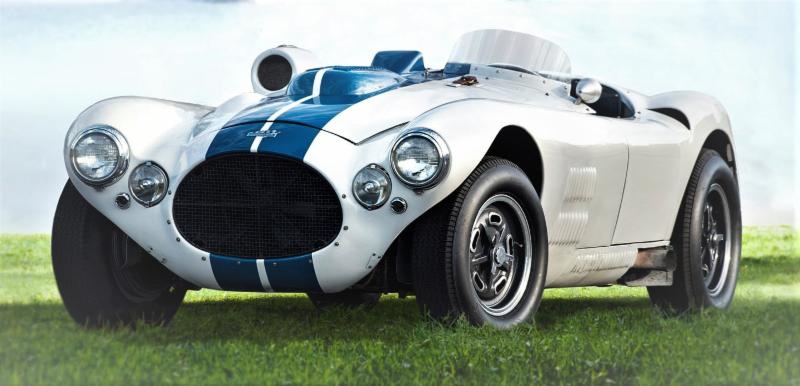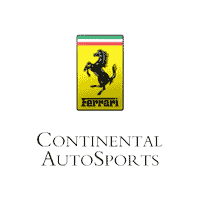Once Upon A Wire Wheel
The following is the third in a series of articles recalling highlights from the Region’s beginnings through the first 50 years. This was written by Bernie & Norm Koglin with input from Fred Wacker, Bud Seaverns, and Burdie Martin to name a few. Look for more articles though out the year. Have fun exploring the past and how it relates to now.

The Times They Were A Changin’
The cover of the January, 1961 PISTON PATTER was graced with a photo of a 540K Mercedes Benz roadster with the Chicago Water Tower in the background. This elegant, low-slung, wire wheeled vintage automobile epitomized the ideals of early SCCA members. But, in 1961 automotive design was entering a new era, and so was the Club. On the other hand members continued to participate regularly in a variety of activities. The 1961 calendar included four races at Wilmot, the June Sprints, the Road America 500 and five Regional Rallies. We also put on the Land of Lincoln National Rally and more than 97 Chicago Region members turned out to WORK the rally. One real advocate of active participation was Al Russell, who wrote his “You know me, AL” PISTON PATTER column for years. He was an active member, director of the Region and a wonderful writer. Al did not confine himself to a theme. He wrote about people he met, his view of events and anything else he thought interesting or curious.
In this bygone era, road racing celebrities were much more accessible. For example, Sterling Moss was the speaker at one of the 1961 membership meetings. The following day, the Region had organized a “drivers’ school” at Meadowdale Raceway, with Sterling instructing various members, for a fee, in their own cars.
Newer members may not know that Chicago Region’s Jim Kimberly was a co-sponsor of the “car that changed everything” at the 1961 Indy 500 – a rear engine Cooper Climax F1 car. The driver was Jack Brabham, F1 World Champion, and he finished in 9th place. A remarkable performance for a car that had been changed little from its European road race configuration.
Following is an excerpt from an article about the 1961 RA 500 in the October, 1961 issue of SPORTS CAR DIGEST. It was reprinted in PISTON PATTER and gives some indication of the degree of international status and admiration that the Chicago Region and Road America had achieved:
“Road America, in case anyone can’t tell from the accompanying report, has swept us completely off our feet. Mexico City’s Autodromo is a beautiful course, but it is evidently man-made. Elkhart though, is racing somehow as it is meant to be – on a road that almost seems to lead somewhere. Of course, we tend to wax eloquent at the sight of a tree (according to rumor, there’s a tree located within 516 miles of our West Texas editorial offices, but we haven’t found it yet). The setting, anyway, is truly beautiful, the town friendly, the food good, the prices reasonable, the organization marvelous – everything about it was right when we were there, except the weather which was hot.
As local yokels watching the big time, we were flabbergasted at the quality of organization achieved by the Chicago Region for this race. Without exception, this was the smoothest, least confused, best run racing event we’ve ever attended. Tech inspection is rapid and complete, course access is good, crowd control is excellent, and all the attendant, niggle-naggle, distressing details of putting on a race with 200 entries and 35,000 spectators were smoothed over. The organization cannot be faulted. And there is a great lesson from these people, however in the world they do it. For one thing, the layout and physical facilities could well serve as a model for race courses everywhere.”
Chicago was the host Region for the 1963 SCCA National Convention. This was a major undertaking in that era because the host region was responsible for organizing the entire event. The Pick-Congress Hotel was convention headquarters, and we managed to procure an up-and-coming night club comic as banquet speaker – Jonathan Winters. While there were only about 650 Chicago Region members at the time, the level of participation was obviously very high.
SCCA took a step in the direction of pro racing in 1963 with the U.S. Road Racing Championship (USRRC) series. In conjunction with ACCUS, the U.S. representative to the F.I.A., SCCA worked out an arrangement for over- and under-2-liter sportscars. Both F.I.A. Appendix “C” and SCCA “modified” cars were eligible, and an over-2-liter Manufacturers Championship for GT cars was incorporated as well. Promoter-invited, non-SCCA, F.I.A. pro drivers were allowed to compete along with SCCA license holders. As might be expected, the Chicago Region – Road America 500 (now converted to 500 Kilometers) was included in the series. Bill Wuesthoff and Augie Pabst won, in an under-2-liter Elva-Porsche. Followed by a very fast, but fuel hungry, Shelby Team Cobra, driven by Ken Miles.
From the end of April through October 1964, six drivers’ schools and 28 races were scheduled in CenDiv. Included among the scheduled races was a USRRC at Meadowdale International Raceway. Track management had requested a sanction for the race and submitted a proposal to Chicago Region. After a period of negotiation an agreement was reached, and the race took place over the weekend of August 8-9. American V-8’s were the big winners, with a Chevrolet in a Chaparral and a Ford in a Shelby Cobra.
Five weeks after the Meadowdale event, we ran the Road America 500 USRRC. A crowd of 38,000 saw Walt Hansgen and Augie Pabst win in a John Mecom-owned, Ferrari 250 LM. Exotic engines were still dominant in longer races.
A planned July 4, 1965 USRRC at Meadowdale was cancelled when it became apparent that track management was not about to commit enough money to make required improvements. Once again, the Region had tried to establish a Meadowdale relationship with unhappy results. Things were wonderful at Road America however, with record attendance at the June Sprints. Jim Hall and Hap Sharp were first overall at the RA 500 USRRC, but George Follmer garnered the same number of points by winning the under-2-liter class with his Elva-Porsche. As a result, George became the overall USRRC champion. In subsequent years, there were over- and under-2-liter USRRC winners crowned, to insure that an overall winning, big-bore car would be declared champion. But it sure was fun to see George Follmer, the giant killer, win it all.
By 1966 the calendar was getting pretty crowded.
There were six drivers’ schools, 36 race events and 2 hillclimbs in the Central Division. There were far fewer SCCA members than today, but races were adequately staffed. It would seem that the percentage of regularly participating workers relative to total membership must have been higher than at present.
Among the factors that unified the members of the Chicago Region in the early years was Wilmot race course. The Region leased the site from the property owners and our members financed the paving of the course. Each Spring volunteers installed removable fencing and guard rails (which would have been a hazard to skiers if left in place). While it was only about 0.7 mile long, it incorporated a quarter-mile main straight to an uphill right hander, followed by downhill esses, onto a shorter straight, and then a decreasing radius (or two radius) turn, which returned one to the main straight. In 1966 we ran four regional races and a drivers’ school at that track, which was a pretty typical year. From almost any place on the property one could see most of the course, and just about everyone on the grounds. The annual “Wilmot Cleanup Days” each spring, were a great social opportunity, and helped everyone get “fired-up” for the upcoming season. It was relatively primitive compared to modern courses, particularly in regard to barriers. Nevertheless, to the best of our knowledge there never was a serious injury at an SCCA event, and certainly in the fifteen years or so of its existence there was never a fatality.
As we headed into the later 60’s, more and more members were becoming totally absorbed in working and organizing races. Many others were committed exclusively to race driving and crewing for race teams. Interest was fading in the varied activities enjoyed by the all-around, occasional racer, rallyist, socially-oriented member.
Too bad, but for the new, typical club member, excitement loomed. Around the corner, with the USRRC as precursor, and big, noisy V8’s in modern chassis, were the most glorious days SCCA has ever seen, spelled CanAm and TransAm.
Editor’s Note:
These articles end in 1989. If any one out there would like to put pen to paper with interesting facts from the years 1990-1999 & 2000-2018 we would very much appreciate them. Send your memories, facts or ramblings to: Peg Ball @Comcast .Net. Thanks!


